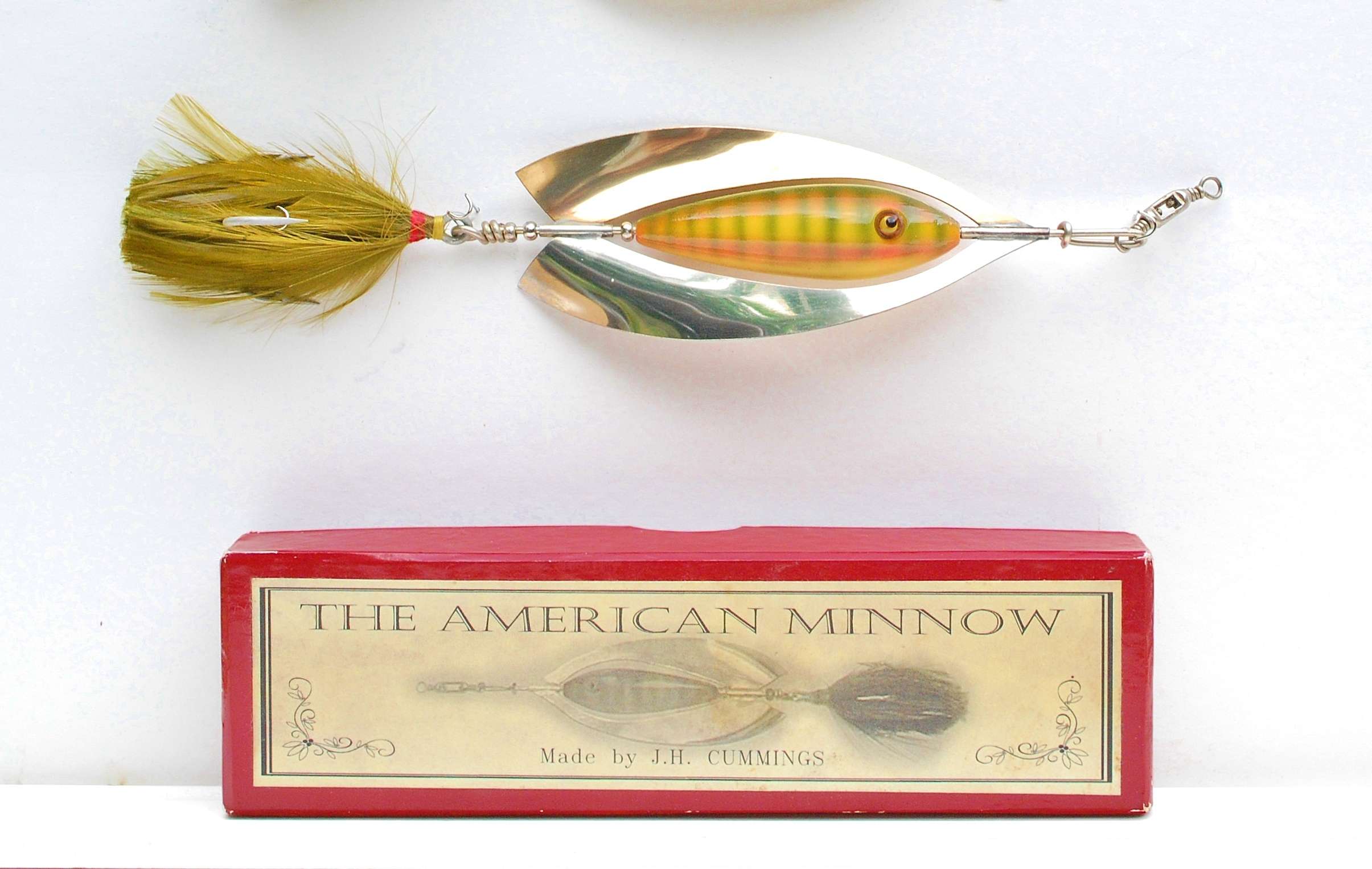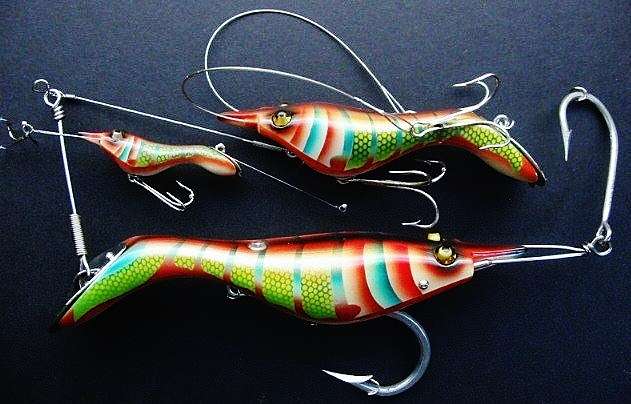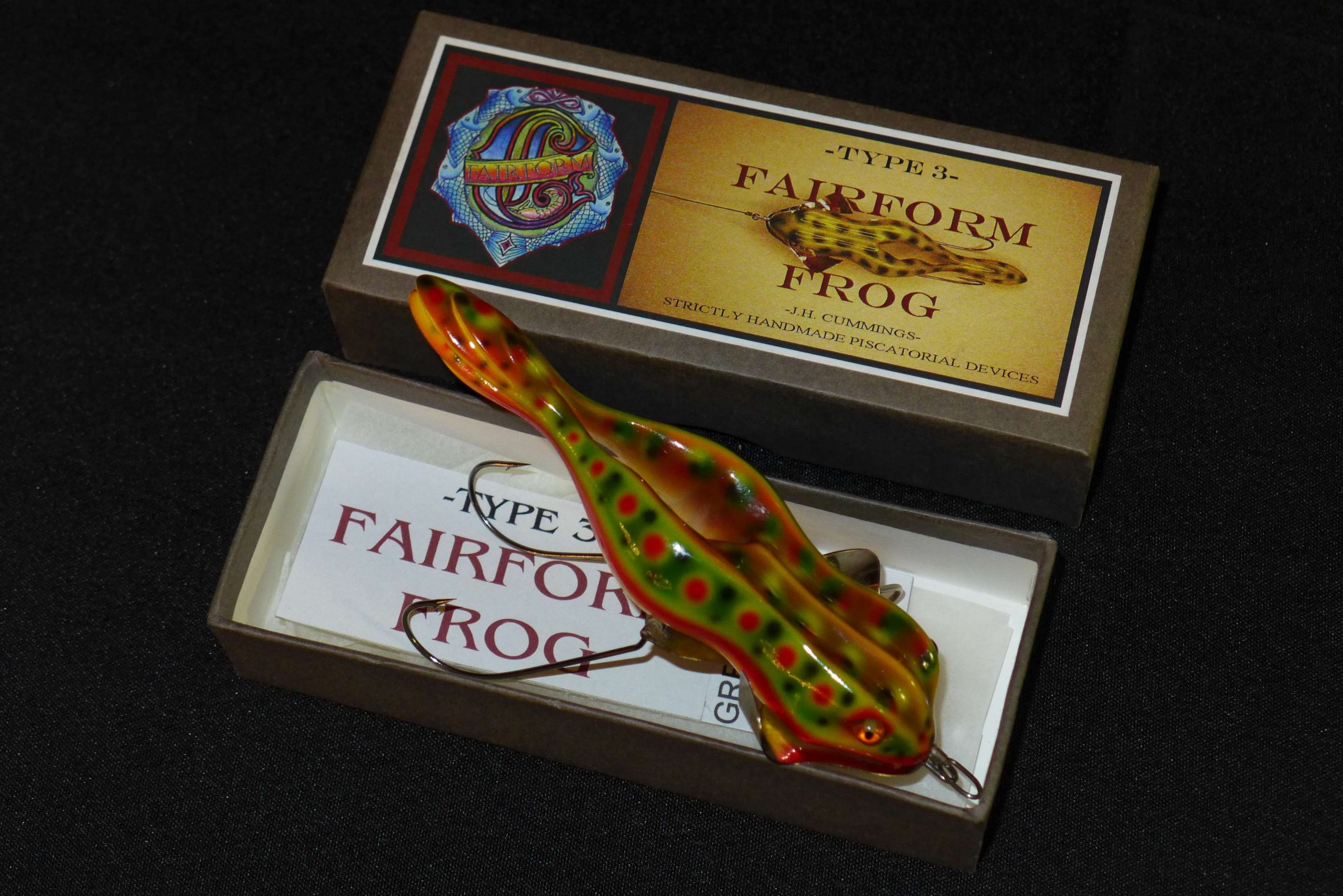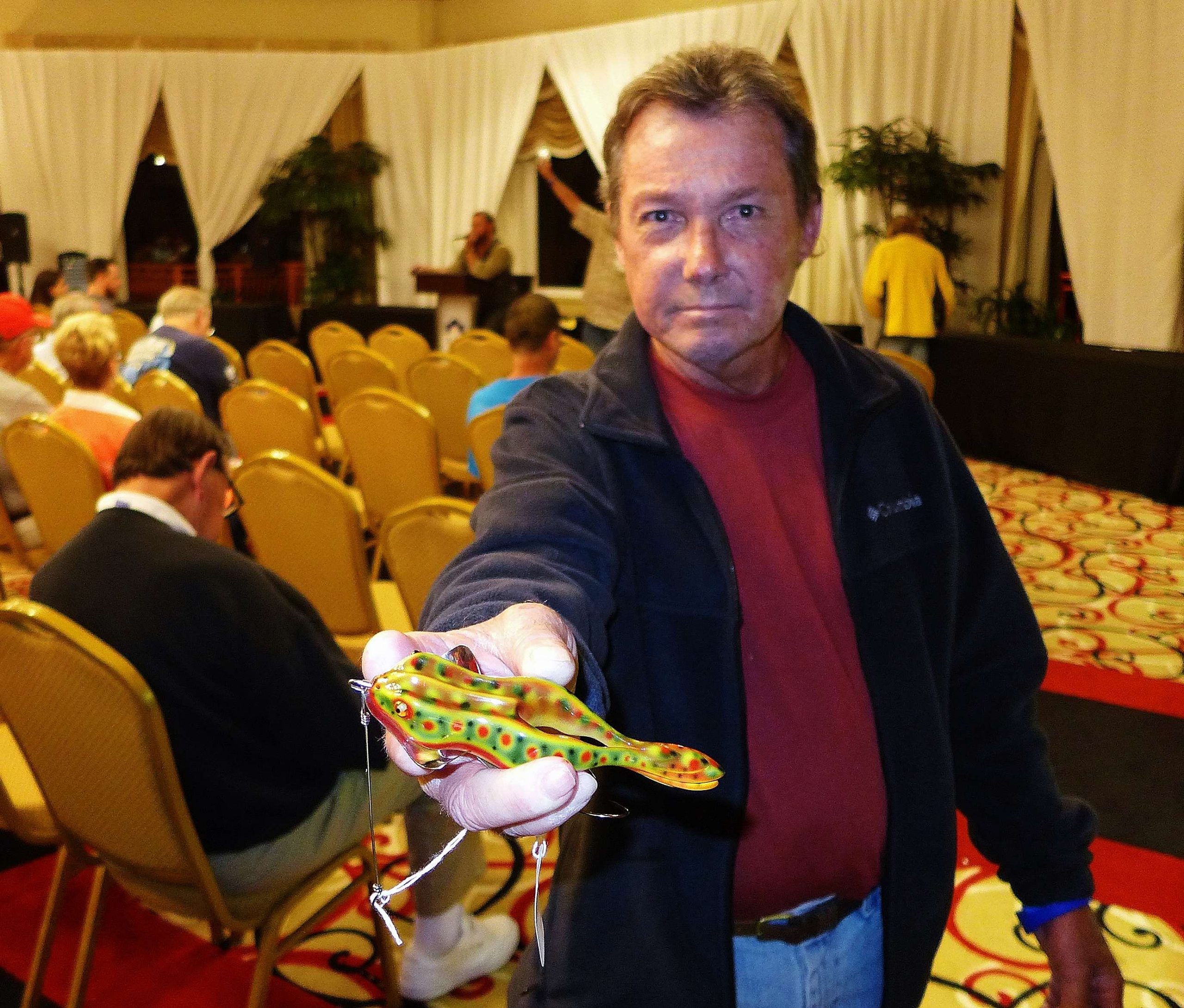
In our sport, lures can be more than simple tools to catch fish. They can be works of art.
Just as a sophisticated handtied fly offers special appeal to the purist fly angler, custom-made lures can do the same for bass fishermen … at least those who have an appreciation for the creative process.
To those of you in that mix, I present Jan Cummings — an angling artist with amazing talent.
Although Jan intends for each of his creations to be fished, the truth is, few will ever touch water. To their beholders, they extend far beyond the boundaries of simple form and function. His lures are considered works of art.
Artist in the Making
Jan Cummings was born in Laurel, Miss., in 1952. As a young boy, he was introduced to fishing by his father, through trips to nearby Lake Bogue Homa. Later, the family moved to Natchez, then Baton Rouge, and finally to Iowa where he found angling opportunities in area creeks and ponds.
He fished for bass, catfish and other species using live bait. What he caught became table fare for his family. It was fishing in its rawest form.
As he grew older, Jan realized he had a talent and appreciation for art. He enjoyed drawing and carving. After high school, he attended Northwest Missouri State University and later enrolled at the Ringling School of Art in Sarasota, Fla. There, he learned sculpting, working with metal and jewelry making.
After school, he partnered with a fellow student and opened a custom sign shop where they made hand-carved signs. This work allowed him to incorporate all of his talents.
As he continued to develop his skills, an acute interest in boating emerged.
“When I got to Florida, I discovered sailing and fishing in saltwater. I knew, at some point, I would work on boats. But not just any boats, classic wooden boats,” he shared.
So, in the 1970s, Jan became a boat carpenter — building and refurbishing wooden boats with traditional techniques. Throughout this period, he continued to fish, but more in saltwater for inshore species … and still with live bait.
It wasn’t until he attended an outdoor festival at the Tampa Florida Fairgrounds in the mid-1990s that Jan developed an appreciation for artificial lures.
There, he encountered a man who had set up a large display of vintage fishing tackle, and in the collection were unusual lures Jan had never seen before. Intrigued by their unique form and function, he became inspired.
Lure Making and Collecting
To learn more, Jan purchased books on vintage lures. There he discovered turn-of-the-century Pflueger and Chapman metal spinners with ornate blades and feathered dressings. That is when he decided to try his hand at making his own custom lures.
“I was amazed by their designs, and how complex and detailed they were … especially for the period they were made in. I knew then that I wanted to make some of my own,” he admitted.
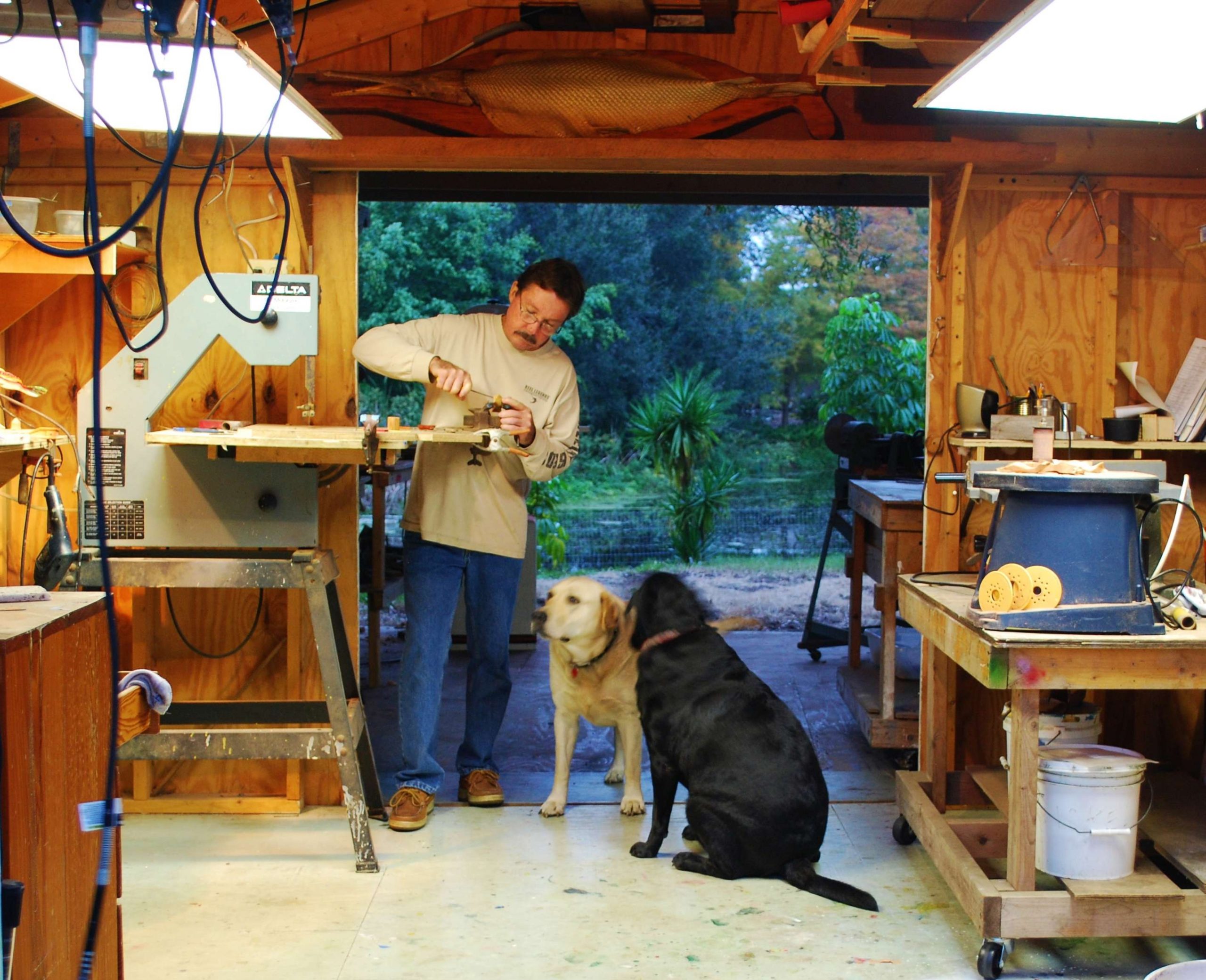
Using his creative talents and the skills he acquired in boat carpentry, Jan went to work. And like any aspiring artist, his first efforts strongly resembled that of the masters he appreciated most.
By this time, he had joined the National Fishing Lure Collectors Club (NFLCC) and Florida Antique Tackle Collectors (FATC). His work was exacting and beautiful, but merely mimicked the historic baits he admired. In essence, he was just copying the early lure making masters.
Under fire by purists in the hobby, he knew he would have to develop his own style of lure making if he was going to be recognized and accepted.
Continuing to work in high-grade woods and metal, Jan crafted a series of new designs … all from scratch. Not only did he draw, shape and airbrush each wooden body by hand, he fabricated all of the metal components as well. When complete, he packaged them in custom boxes he made himself and labeled them with his own graphics.
Jan’s work had become uniquely his own, and the purists in the collecting world began to soften their opinions.
More Challenges to Overcome
Unfortunately, like many struggling artists, Jan suffered serious setbacks.
At age 40, he was diagnosed with CREST Syndrome — a vascular disease that can worsen with age. The illness became debilitating. Treatment was costly, and Jan was forced to sell off most of his collection of early lures and spinners — a collection that took years to build.
As time passed, the illness took a further toll. He lost a leg and several fingers on his favored hand. Still, he remained optimistic about the future.
Recently, Jan was awarded Honorary Membership in both the NFLCC and FATC — the very organizations where his work was once scorned. Now his creations are revered as much as those of the masters who inspired him.
Instead of $100-200, Jan’s baits now sell for much higher prices. In a recent auction held at the Daytona International Antique Tackle Show, two Jan Cummings lures sold for more than a $1,000 each with buyer premiums.
And despite his challenges, Jan wants to make more art.
But overcoming his disabilities won’t be easy. He’ll have to train his left hand to do a lot of intricate work. His friends and fans in the hobby hope he’ll find a way. Jan Cummings is an artisan of rare ability with a passion for angling and creating unique works of art.
